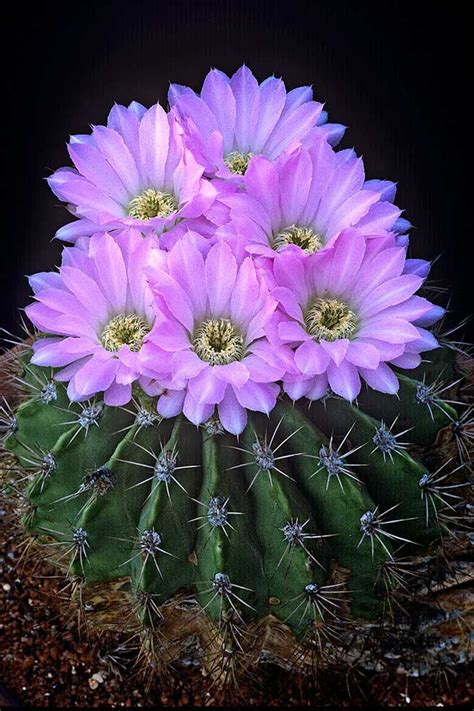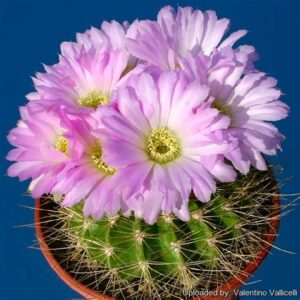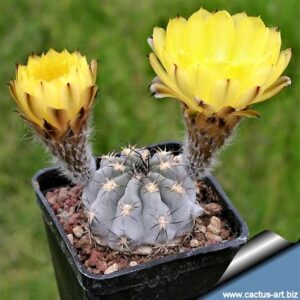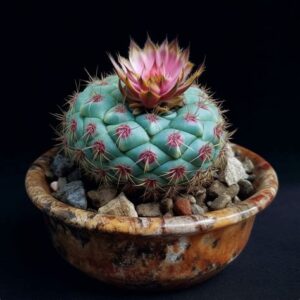Acanthocalycium violaceum, a member of the Cactaceae family, is an enchanting species that invites enthusiasts and casual observers alike into the fascinating world of cacti. Known for its stunning blooms and unique morphology, this exceptional cactus offers a myriad of delights for plant lovers. In this article, you will uncover the captivating attributes of Acanthocalycium violaceum, from its exquisite flowers to the intricate care it necessitates. For those intrigued by horticulture, this regional gem promises a delightful exploration into the realm of desert flora.
Exploring the Acanthocalycium Violaceum’s Distinctive Characteristics
At first glance, Acanthocalycium violaceum captivates with its robust, globe-like form. Its compact stature, typically growing to around 5-10 centimeters in height and 10-15 centimeters in width, makes it an appealing candidate for both indoor and outdoor cultivation. The skin of this cactus features a delightful palette ranging from a deep green to a bluish hue, often embellished with prominent ribs that are distinctly wavy. Each rib has sharp, prominent spines that serve both a protective function and contribute to its striking aesthetics.
The most stunning feature of Acanthocalycium violaceum is undoubtedly its blooms. Flowering typically occurs in the late spring or early summer, where a mature plant can produce an array of spectacular blossoms. These flowers can reach up to 6 centimeters in diameter and come in shades of purple, pink, or white, exuding an almost ethereal beauty that attracts pollinators. Moreover, the blooms often open during the day and close in the evening—a characteristic that only adds to their intrigue.
Understanding the Natural Habitat of Acanthocalycium Violaceum
Natively, Acanthocalycium violaceum thrives in the arid regions of South America, specifically in Argentina and parts of Bolivia. Its natural habitat is defined by desiccated landscapes characterized by scarce rainfall and intense sunlight, thus shaping its physiological adaptations. Understanding these environmental conditions is crucial for providing your cactus with a suitable home, as it informs the cultivation practices that ensure healthy growth.
In its native biome, the Acanthocalycium experiences warm temperatures that can soar during the day while plummeting at night. This diurnal temperature variation is pivotal for growth, as it enables the plant to effectively manage water retention. Furthermore, the soil composition in these regions is typically sandy or rocky, allowing for excellent drainage, which is vital for the prevention of root rot—a common affliction among cacti enthusiasts.
Establishing a Caring Regimen for Acanthocalycium Violaceum
Cultivating Acanthocalycium violaceum may seem daunting, yet it is notably forgiving for novices and seasoned gardeners alike. Implementing a diligent care regimen ensures that your cactus flourishes to its full potential.
Light Requirements: A Key Element for Thriving Growth
Light is paramount when it comes to the vitality of Acanthocalycium violaceum. Ideally, this cactus should bask in bright, indirect sunlight, mimicking its native conditions. A south-facing window is often considered ideal for indoor cultivation. However, extremes of direct sunlight can lead to sunburn, causing unsightly blemishes on the succulent skin. Gradual acclimatization to brighter light is advisable to avert such issues.
Avoiding Overwatering: The Art of Thirst Management
The notorious troublemaker in the cactus gardening world is invariably overwatering. Acanthocalycium violaceum is adapted to thrive in arid conditions, and as such, it requires a meticulous approach to irrigation. During the growing season, it is vital to allow the soil to dry out completely between watering sessions. This typically translates to watering every two to three weeks, depending on environmental conditions. During the dormant winter months, reduce watering frequency to once a month, allowing your plant to conserve energy and water.
Soil: The Secret to Success
Creating the right soil mix for Acanthocalycium violaceum can be pivotal for its successful growth. Use a well-draining succulent or cactus mix, or you can make your own blend with equal parts potting soil, sand, and perlite. This allows for excellent drainage, mimicking its natural habitat where water retention is minimal. Proper aeration is fundamental to prevent the roots from becoming waterlogged and eventually rotting.
Temperature and Humidity: Finding the Perfect Balance
Acanthocalycium violaceum favors warmer temperatures, thriving best in ranges from 21°C to 30°C during the growing season. Nighttime temperatures can dip lower, but it is crucial to avoid frost. In terms of humidity, this cactus cherishes a dry atmosphere, inadvertently contributing to its stature as a low-maintenance plant. Ensuring airflow around your plant can further aid in mimicking its natural environment.
Fertilization: Nourishing for Growth and Bloom
Fertilization of Acanthocalycium violaceum should be approached with careful consideration. During the growing season, a diluted fertilizer specifically designed for cacti or succulents can be applied once a month. This input provides the necessary nutrients to promote robust growth and vibrant blooms. However, it is essential to refrain from fertilizing during the dormant winter months to prevent any undue stress on the plant.
Propagation Techniques: Expanding Your Cacti Collection
Once you have successfully nurtured an Acanthocalycium violaceum, you may find yourself inspired to propagate this captivating species. Propagation is most commonly achieved through offsets, which are small offshoots that develop around the base of the parent plant. Carefully detach these offsets using a sterilized knife, allowing the cut end to dry for several days. Once calloused, the offsets can be planted in well-draining soil, with care taken to replicate the same irrigation and light conditions as the parent plant.
Common Pests and Problems to Watch For
While Acanthocalycium violaceum is relatively resilient against pests, occasional infestations by mealybugs or spider mites may occur. Regularly inspecting your plant and removing any detected pests with a q-tip dipped in rubbing alcohol can help maintain its health. Signs of overwatering, such as yellowing or wilting, should not be overlooked, as they can signal the onset of root rot. Timely intervention, including adjusting watering habits, can avert further damage.
Conclusion: Reveling in the Splendor of Acanthocalycium Violaceum
In conclusion, Acanthocalycium violaceum serves as a dazzling example of what the world of cacti has to offer. Its stunning blooms and heartening resilience invite plant enthusiasts to delve into its enchanting care requirements. This cactus not only enriches gardens with its aesthetic appeal but also captivates the hearts of those who nurture it. Understanding its individual needs provides a rewarding experience, as the colorful blossoms burst forth, creating a display that is nothing short of exceptional. For those who are prepared to embrace the quirks of care, Acanthocalycium violaceum guarantees a delightful horticultural journey, promising admiration and curiosity at every turn.





Leave a Comment